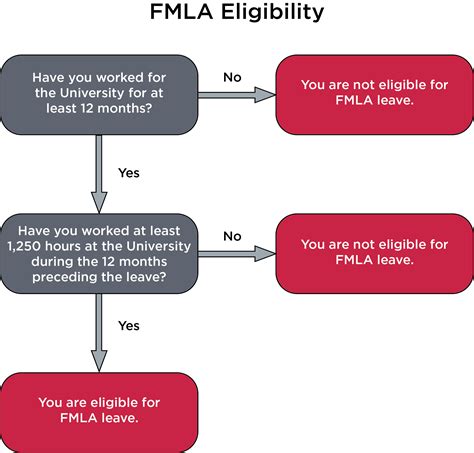Intro
Master 5 CA FMLA tips for family and medical leave, including eligibility, benefits, and employee rights, to navigate Californias leave laws and ensure compliance with FMLA regulations and state-specific requirements.
The Family and Medical Leave Act (FMLA) is a vital piece of legislation that provides eligible employees with up to 12 weeks of unpaid leave in a 12-month period for certain family and medical reasons. Understanding the intricacies of the FMLA is crucial for both employees and employers to navigate the process smoothly. In this article, we will delve into the world of FMLA, exploring its benefits, working mechanisms, and key information that everyone should know.
The importance of FMLA cannot be overstated. It offers a safety net for employees facing serious health conditions, caring for a newborn or newly adopted child, or tending to a family member's health issues. This leave allows employees to take the necessary time off without fear of losing their job, thus reducing stress and promoting a healthier work-life balance. For employers, understanding the FMLA is essential to avoid non-compliance issues and to maintain a positive, supportive work environment.
As we explore the realm of FMLA, it becomes clear that knowledge is power. Being informed about the rights and responsibilities under the FMLA can make a significant difference in how leave is taken and how it impacts both the employee and the employer. Whether you are an employee considering taking leave or an employer seeking to comply with the regulations, understanding the FMLA is the first step towards a smoother, more successful experience.
FMLA Eligibility and Coverage

Key Eligibility Criteria
- The employee must have been employed by the employer for at least 12 months. - The employee must have worked at least 1,250 hours in the 12 months preceding the start of leave. - The employer must have at least 50 employees within 75 miles of the employee's worksite.Types of FMLA Leave

Reasons for Taking FMLA Leave
- The birth of a child and to care for the newborn child within one year of birth. - The placement with the employee of a child for adoption or foster care and to care for the newly placed child within one year of placement. - To care for the employee’s spouse, child, or parent who has a serious health condition. - A serious health condition that makes the employee unable to perform the essential functions of their job. - Any qualifying exigency arising out of the fact that the employee’s spouse, son, daughter, or parent is a covered military member on “covered active duty.”Notice and Certification Requirements

Notice Requirements for Employees
- For foreseeable leave, provide 30 days' advance notice. - For unforeseeable leave, provide notice as soon as practicable. - Failure to provide notice may result in delay or denial of leave.Benefits and Protections Under the FMLA

Key Protections for Employees
- Job protection: Return to the same or an equivalent job. - No retaliation: Protection against discrimination or penalty for taking leave. - Health insurance: Continued coverage under the employer’s group health plan.Challenges and Considerations for Employers

Best Practices for Employers
- Develop a comprehensive FMLA policy. - Provide clear communication to employees about their rights and responsibilities. - Maintain accurate and detailed records of leave requests and usage.Conclusion and Future Directions

Looking Ahead
- Potential for paid family leave. - Expansions of eligibility and coverage. - Technological innovations to improve leave management.What is the primary purpose of the FMLA?
+The primary purpose of the FMLA is to provide eligible employees with unpaid leave for certain family and medical reasons while protecting their job and health insurance benefits.
How many hours must an employee work to be eligible for FMLA leave?
+An employee must have worked at least 1,250 hours in the 12 months preceding the start of leave to be eligible for FMLA leave.
Can an employer deny FMLA leave if the employee fails to provide proper notice?
+Failure to provide proper notice may result in the delay or denial of leave, but the employer must follow specific procedures and consider the circumstances of the leave request.
In wrapping up our exploration of the FMLA, it's clear that this legislation plays a vital role in supporting the health, well-being, and family needs of employees across the United States. Whether you're an employee seeking to understand your rights or an employer looking to ensure compliance and support your workforce, the FMLA is a critical piece of the employment landscape. We invite you to share your thoughts, experiences, and questions about the FMLA, and to explore further resources and support as you navigate this complex but essential aspect of employment law.
